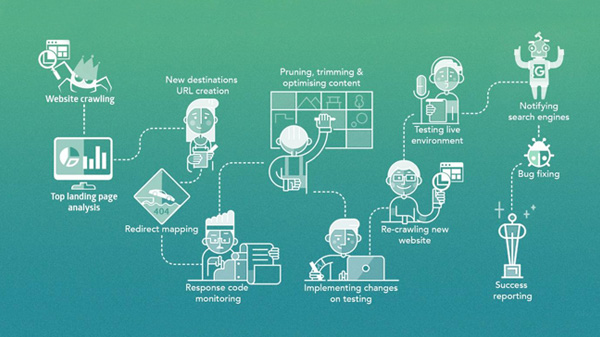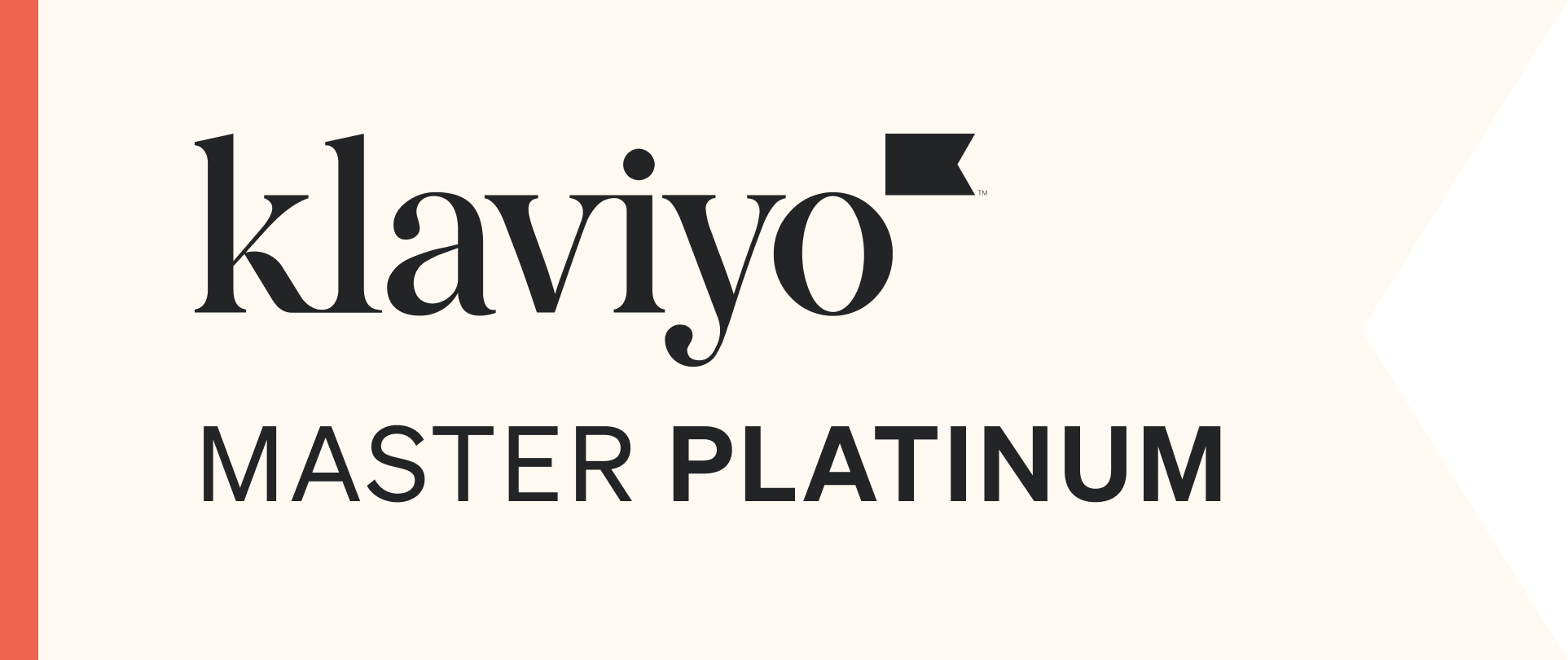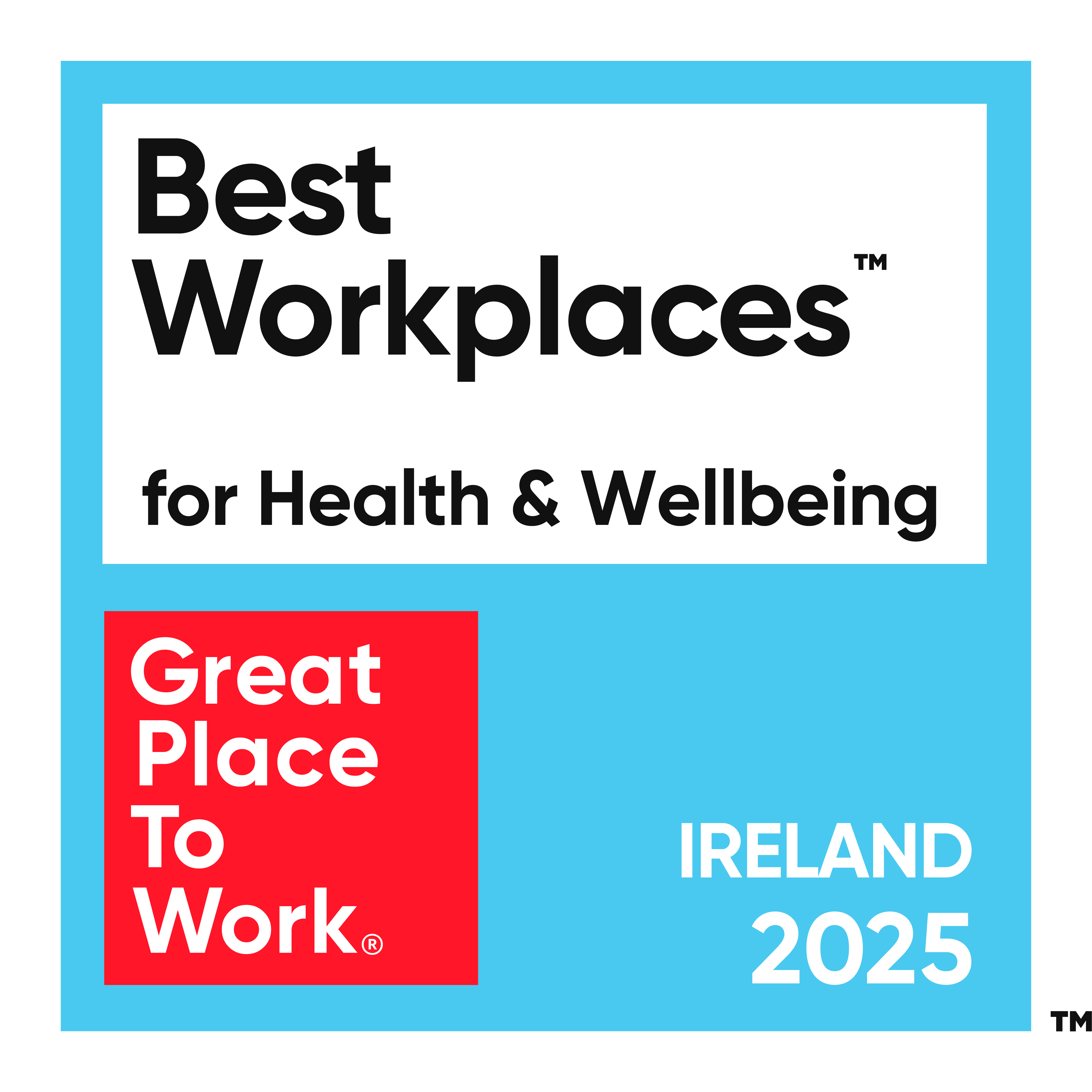By Luke Fitzgerald on 15 Feb 2018

Moving Website or Replatforming? We've Got You Covered
As businesses grow and evolve, so too do their websites.
Throughout the life-cycle of a website, domains can change or be merged, content management systems might be scrapped or upgraded. While all of this goes on, a lot can be gained but also lost. If your business finds itself in a situation where someone utters that terrifying word “migration”, it’s imperative that you follow a strategic migration roadmap.
This ensures there is minimal impact to your organic search visibility. From our experience, migrations have always run best when you contact your specialists early and get them involved from the start. Here’s how we help our clients move from A to B or transfer all their valuable web assets onto a new platform from the get-go.
Pre-Migration Activities
To get the ball rolling, taking a snapshot of site structure is key and this is achieved by performing a full site crawl. This also fuels the redirect mapping process which ensures all existing organic search results still direct people to active and relevant pages. This is one of the most laborious aspects of a site migration, but as you might imagine, it’s also one of the most important elements.
During a site migration, it’s normal to carry out some spring cleaning too. Many will take this opportunity to trim the fat a little on their side, removing old pages with no SEO and simply allowing them to redirect to 404. If you plan to go down this route, put some time into your 404 page and ensure the page contains search functionality or links to other content on the site. Don’t let a 404 be a dead end.
Alternatively, if a legacy page has links pointing to it, it is essential to 301 redirect this URL to a relevant page on the new site. Don’t let your SEO wins of the past dissolve into the internet ether; this is equally important whether you're moving home or replatforming your site as our Gareth outlined so eloquently at Wolfgang Essentials in the Google Foundry last May:
Benchmark Your Site
To kick things off, you want to benchmark the existing state of the site before you start migrating. The primary KPIs to monitor in your benchmarking are:
- Keyword Rankings
- Pages Indexed
- Organic Traffic
- Organic Conversions
- Organic Revenue
Search Console
If you don't tell Google about your site, it could take them forever to find it. Search Console is the easiest way to fire a flare into the air and signal to Google that your site is ready to rock. Make sure you cover all four versions of your site too: http, https, www and non-www.
Search Console is also where you can submit your robots.txt file on migration day.
Create a Custom 404 Page
While migrations might be stressful, they are also a great time to get some spring cleaning done. Take this opportunity to prune your site, removing old pages that don't add value or organic search visibility to your company. This makes a custom 404 error page an important part of the migration process as non-critical pages might not require 301 redirects but could still be found my people down the line. A good 404 error page directs the user towards similar content or provides a search option.
If it suits your brand, it's also a chance to have a bit of craic.
Our Excel migration checklist is a simple way to track the three key stages of your site's migration, covering pre-migration, mid-migration and post-migration.
Mid-Migration Activities
Once the trigger is pulled and the transfer of assets has commenced, it's always a good idea to keep an eye on performance, as improvement is the aim of the game with any migration or relatforming project.
Check Your Tracking Implementations
Few things frustrate digital teams more than gaps in their analytics data. If you're a multichannel retailer, gaps can undermine your channel, impacting key business decisions and cost your department valuable budget versus other channels. Owing to all the moving parts of a site migration, it's possible that your Google Analytics, or similar tracking software, implementation can go wrong.
Be sure to test this as you go and ensure new pages have the required tracking code and social media pixels deployed. This is another great reason to use Google Tag Manager as you will generally only need to test one piece of code.
A simple task, but after a few weeks, you will know why you did it. Annotate migration day in Google Analytics, for future benchmarking.
Test Redirects and Links
Test the URL redirects, early identification is key, use your redirect map and test as many URLs as possible to ensure all has been implemented correctly and the core SEO task is firing on all cylinders.
Check internal linking on the site as missing out on this step can have grave consequences. Examine the site and ensure there are no redirect loops, which will drain crawler resources and slow down the success of the migration. Again, Search Console is key. Creating an XML Sitemap is another essential element of a website migration, create this and submit it to Google Search Console, this can then be monitored to identify any indexation issues post-migration.
Should the website be moving to a completely new Domain/URL structure, informing Google through Google Search Console of a change of address will help your SEO efforts. Also, add the new Sitemap URL to the robots.txt file and don't forget Bing Webmaster Tools for a similar reupload and notification process.
If you have indeed moved from one domain to another, then Google's Change of Address feature is a must to help send the right signals to Big G.
Post-Migration Activities
Allowing the dust to settle on a site move or replatform is always the most daunting phase of the migration process. It can take a couple of weeks for Google and other search engines to figure out what's just happened with your site, but there are of course a few methods for helping to soothe the uncertainty and ease in the website within it's fresh new surrounds.
Camp in Search Console
You'd be amazed how many websites ignore the incredible power of Search Console but post-migration is where this free software from Google comes into its own. Use Search Console's analytics on a daily basis to look for errors and warnings, including:
- 404 and 500-level errors,
- Errors with the sitemap file,
- Crawl rate issues,
- HTML problems - duplicate content or title tags and meta descriptions too short, too long, or missing
Check Google for the number of indexed pages by carrying out a site lookup in Google search. You can do this using Google's search operators and it'll look like this: site:www.yoursite.com.
Post-Migration Audit
Conduct a post-migration audit to identify any technical issues that may be present on the new site such as:
- Title tags, meta descriptions, and H1s are correct (and not missing or duplicated)
- Any noindex/nofollow and robots.txt disallow directives have been removed
- Navigation and images are crawlable and indexable (and there isn’t any duplicate content)
- Structured markup (schema.org) is implemented and correct on all applicable elements
- Mobile brand breadcrumbs are in place on all pages
- Site speed (desktop and mobile) is high
Outreach and Link Reclamation
A long-term element of any migration is to begin contacting partners, resources and websites with high Domain Authority that have links pointing to the site and inform them of the new URL they should be pointing to.
Repointing links is still a hugely valid and valuable process in 2018, as illustrated in great detail by BuiltVisible. There's a lot of effort involved, but it is certainly worth it as the authority of your legacy links are eventually passed through to your new URL strucutrue over a period of a couple of months post-migration.
Finally, identify and re-submit a link disavow file to Google Search Console, if there was one previously submitted, as these links will rear their ugly head again and damage all your hard work.
Your Site Migration Toolbox
There are a plethora of tools out there that you'll need to conduct an SEO-friendly site migration. Some are free and some are premium; here's our pick of the bunch:
Screaming Frog
Google Analytics
Google Search Console
SEMrush
Google Tag Manager
Sitebulb
SearchVIU
URL Profiler
Other Cool Resources for Migrating your Website
Your organic traffic is highly valuable and we do strongly recommend bringing an SEO team on-board to assist with a migration before you make any changes. You can read up on what it takes to recover a site from a migration gone wrong in this brilliant Aleyda Solis post on Moz.
There are also some great reads on migration checklists from Credo, Seer Interactive and SearchVIU which are well worth informing yourself on prior to jumping into a large-scale site migration of any kind.
Enlist a Web Migration Specialist
So, if you're thinking of making the move for whatever reason in the weeks or months ahead, be it a simple HTTPS migration, a more complex domain consolidation, merger/aquisition, brand refresh, rebranding exercise or upgrading to a new CMS, please do drop us a line and see how we can help!
The earlier you start planning this process out in advance prior to execution, the better. For mid-to-large sized sites, we always recommend at least six month lead-in time to ensure you get this right and ensure you're bringing forward all the goodness of your existing domain and leaving behind all the niggly-nonsense which has led you to this decision to upgrade your web presence in the first place.
Using the above processes, we've developed a broad range of experience in helping our clients successful migrate site and replatfrom across a range of cutting-edge CMS and eCommerce technologies including Demandware/Salesforce, WordPress, Magento/Magento 2, ExpressionEngine, Sitefinity, TYPO3, Shopify, Sitecore, Kentico, Joomla, Hubspot, Drupal and even some custom builds.. you name it, we've helped migrate it!


.png)
.png)







_2025.png)

